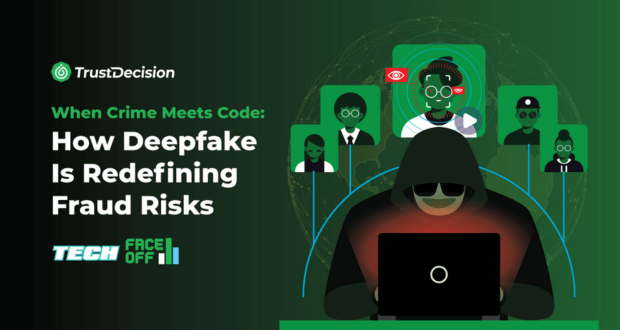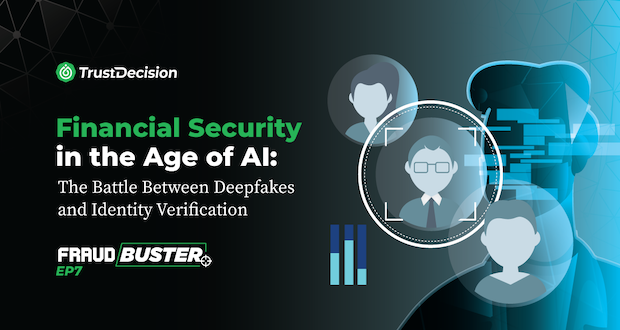Key Takeaways
- The global eKYC market is projected to grow from US$805.8M in 2024 to US$3.56B by 2033.
- Agentic AI adoption in KYC/AML delivers 200%–2,000% productivity gains, enabling faster onboarding and smarter fraud detection
- Biometric verification remains dominant, holding 36.2% of the market in 2024, with strong projected growth through 2030
- Regulatory enforcement is intensifying, with global AML/KYC penalties exceeding US$4.5B in 2024
- eKYC automation can reduce compliance costs while improving accuracy, with false acceptance rates dropping below 1% through AI-powered verification systems.
- New trends include document-free verification, API-driven platforms, sanctions and PEP screening, and continuous KYC (cKYC) for ongoing compliance.
What Is eKYC and Why It Matters
Imagine opening a bank account in under 60 seconds with just your smartphone. That’s the power of electronic Know Your Customer (eKYC) — a digital-first approach that eliminates in-person meetings and manual paperwork.
The global demand for eKYC reflects a dual pressure: customer expectations for frictionless digital onboarding and regulatory requirements to prevent fraud, money laundering, and terrorism financing.
At its core, eKYC builds upon the traditional Customer Identification Program (CIP) but extends it with automation and intelligence. Modern systems incorporate:
- AI and machine learning for document and biometric analysis.
- Sanctions and Politically Exposed Person (PEP) screening.
- Continuous monitoring (cKYC) for ongoing compliance.
- Beneficial ownership checks to meet transparency rules.
Organizations that fail to modernize risk not only customer attrition but also regulatory penalties for non-compliance.
eKYC Meaning and Its Core Process
eKYC is a digital identity verification framework that confirms a customer’s identity online. A comprehensive eKYC verification process typically involves five stages:
- Customer Identification Program (CIP): Capture and validate government-issued ID documents.
- Customer Due Diligence (CDD): Basic screening against databases, sanctions lists, and watchlists.
- Enhanced Due Diligence (EDD): Additional checks for high-risk clients such as PEPs, large corporates, or those in high-risk jurisdictions.
- Continuous KYC (cKYC): Ongoing monitoring of customer activity and risk profiles over time.
- Reporting and Audit Trails: Generating compliance-ready logs for regulators.
Unlike traditional KYC, eKYC achieves these steps within minutes instead of days, using AI and automation to cross-reference thousands of data points.
Types of eKYC Methods Explained
eKYC is not a one-size-fits-all solution. Businesses can choose from several methods depending on regulatory requirements, customer demographics, and risk appetite.
Biometric-Based eKYC
Leverages facial recognition, fingerprints, or iris scans for high accuracy.
- Biometric engines currently dominate the market, reflecting widespread confidence in liveness detection technologies.
- AI enhancements now add micro-expression tracking and depth analysis to prevent spoofing and deepfake attempts.
Video-Based eKYC Verification
For cases where automation alone may not suffice, video verification offers a reliable alternative.
How does video-based eKYC improve remote customer verification?
Through live video sessions with agents or AI, customers’ documents and faces are verified in real time. This method is widely used in banking, fintech, and travel for remote onboarding and fallback scenarios where automated systems struggle.
Document-Based eKYC
A more traditional approach, document-based eKYC relies on OCR (Optical Character Recognition)
AI validates IDs by checking security features, fonts, holograms, and embedded patterns, making it suitable for regions without central ID systems.
Emerging eKYC Methods
As digital ecosystems expand, new eKYC methods are gaining traction:
- OTP-Based Verification: SMS or email codes for quick authentication.
- Mobile Device Features: Device fingerprinting and behavioral biometrics.
- Government Authentication: Verify the document information and face match against local authority.
- Jurisdictional Risk Scoring: Regional compliance checks for higher-risk markets.
How AI Improves Smarter eKYC Verification
AI is no longer just an add-on — it sits at the core of modern eKYC systems. By combining document checks, biometrics, and behavioral analytics, AI creates a multi-layered defense against fraud.
- AI-Powered Document Verification: Advanced computer vision detects manipulated IDs, deepfake videos, and synthetic documents at the pixel level.
- Enhanced Biometric Security: Multi-modal systems analyze facial geometry, voiceprints, and behavioral traits simultaneously for stronger verification.
- Real-Time Anomaly Detection: AI tracks device signals, geo-location, and transaction behavior to flag unusual activity instantly.
- Advanced Liveness Checks: Techniques such as micro-expression and reflex analysis help counter spoofing attempts and synthetic identity fraud.
According to McKinsey’s 2025 findings, banks using agentic AI in KYC/AML operations achieved 200%–2,000% productivity improvements. These gains translate into faster onboarding, sharper anomaly detection, and compliance teams freed from routine tasks to focus on high-value investigations.
Benefits of eKYC for Businesses and Customers
The impact of eKYC extends far beyond compliance. It creates tangible benefits for both businesses and end-users:
- Faster Onboarding: Customer wait times shrink from days to minutes, reducing friction at account opening.
- Lower Compliance Costs: Automation trims 50–70% of operational costs compared to manual verification processes.
- Enhanced Fraud Prevention: Advanced systems achieve low false acceptance rates (<1%) while keeping genuine-user rejections minimal.
- Regulatory Penalty Reduction: eKYC safeguards organizations from costly AML fines through proactive, ongoing compliance.
- Global Compatibility: ISO 20022 standards and open APIs ensure interoperability across banking and fintech ecosystems.
- Improved Customer Experience: Privacy-first, seamless onboarding builds trust and loyalty with customers.
Industry-Specific Applications of eKYC
eKYC use cases differ by sector, but the underlying goal remains the same: secure, scalable verification.
Banking & Payments
Banks rely on eKYC to speed up loan and account onboarding while balancing compliance and risk.
- Faster credit approvals and account openings.
- Risk-based segmentation across customer tiers.
- Enhanced Due Diligence (EDD) for high-net-worth individuals.
Learn more about our solutions for the Banking industry.
Crypto & Web3
For digital assets, eKYC ensures trust in a rapidly evolving regulatory environment.
- Compliance with FATF Travel Rule mandates.
- Decentralized ID verification using blockchain.
- Privacy-preserving checks for pseudonymous wallets.
The Financial Action Task Force (FATF) Travel Rule requires Virtual Asset Service Providers (VASPs) to share originator and beneficiary information for cross-border virtual asset transfers, similar to requirements already in place for banks. Regulators across regions (EU, U.S., Singapore, and others) are stepping up enforcement, and industry studies confirm that compliance will be a major focus for VASPs in 2025.
Travel & E-commerce
In high-volume industries, scalability and fraud prevention are top priorities.
- Large-scale verification to handle peak traffic.
- Fraud prevention in ticketing and cross-border payments.
- Seamless onboarding integrated with loyalty and payment systems.
Learn more about our solutions for the E-commerce industry.
Implementation Strategy for Businesses
Adopting eKYC successfully requires more than choosing a vendor — it demands a strategy.
- API-First Integration: Prioritize solutions with SDKs, webhooks, and real-time responses for fast deployment.
- Regulatory Compliance: Ensure alignment with FATF, AMLD6 (Sixth Anti-Money Laundering Directive (European Union), GDPR (General Data Protection Regulation), and upcoming EU AMLR (Anti-Money Laundering Regulation) obligations.
- Evaluation Criteria:
- Document acceptance rates across target regions.
- Accuracy and robustness of biometric and liveness detection.
- Integration complexity and level of vendor support.
- Compliance certifications and audit readiness.
- Flexible, scalable pricing models.
For businesses seeking a full-stack approach, explore TrustDecision’s Fraud & Identity Solutions.
Future of eKYC: What to Expect
The eKYC landscape is evolving quickly. The next few years will bring even more advanced capabilities and regulatory alignment.
- Global Standards Convergence: FATF guidelines and EU AMLR signal progress toward harmonized cross-border compliance.
- Generative AI in Verification: Predictive models will anticipate fraud attempts and adapt authentication flows dynamically.
- Voice and Behavioral Biometrics Expansion: Signals such as typing rhythm, mouse movement, and device handling will become mainstream.
- Embedded Banking Integration: Continuous authentication will be embedded directly into everyday transactions.
- Crypto & Travel Rule Compliance: Virtual Asset Service Providers (VASPs) will continue to strengthen compliance with the Travel Rule for cross-border crypto transfers.
Conclusion: Building Trust With Smarter eKYC
AI-powered, API-first eKYC solutions are no longer just compliance tools — they are strategic enablers for growth. By reducing onboarding friction, ensuring AML compliance, and enhancing fraud detection, businesses can improve conversion, lower risk, and strengthen trust.
TrustDecision has been recognized as a Niche Player in the 2025 Gartner® Magic Quadrant™ for Identity Verification, highlighting our advanced IDV solutions for secure, compliant, and scalable digital onboarding.
As global regulations converge and AI capabilities advance, eKYC is set to become the gold standard for digital identity verification across industries.
Ready to adopt smarter eKYC? Contact TrustDecision to learn how we deliver tailored solutions that balance robust security with a seamless user experience for your business.








.jpeg)




